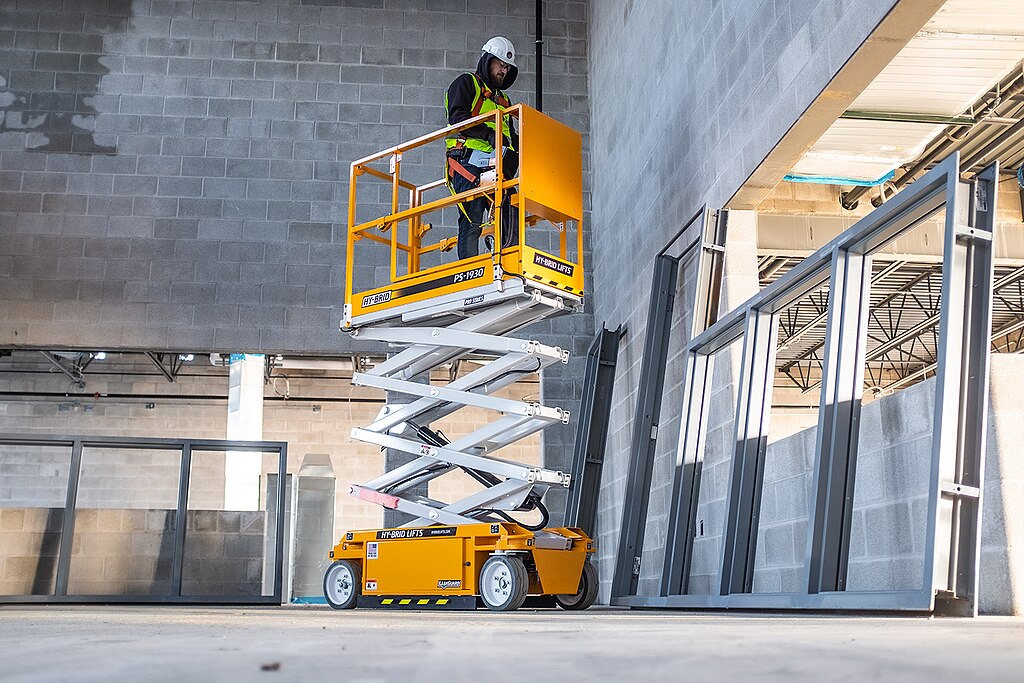The Versatile World of Scissor Lifts: Essential Equipment for Modern Industries
Scissor lifts are indispensable pieces of equipment in various industries, providing a safe and efficient means of vertical access for workers and materials. These hydraulic-powered platforms have revolutionized the way tasks are performed at height, offering unparalleled versatility and mobility. From construction sites to warehouses, scissor lifts have become an integral part of modern industrial operations, enhancing productivity and safety in numerous applications.

The working principle of a scissor lift is based on the application of force to the lowest set of supports, which causes the entire structure to extend upward. As the supports unfold, they push the platform to its desired height. This mechanism allows for a stable and level working surface at various elevations, making scissor lifts ideal for tasks that require precise positioning and a solid foundation.
What are the primary applications of scissor lifts in construction?
In the construction industry, scissor lifts play a crucial role in numerous tasks that require working at height. They are commonly used for:
-
Installing ceiling fixtures, ductwork, and electrical systems
-
Painting and finishing work on walls and ceilings
-
Window installation and maintenance
-
Masonry and facade work
-
Material handling and lifting heavy equipment to upper levels
Scissor lifts offer a safer and more efficient alternative to traditional scaffolding or ladders, allowing workers to quickly and easily access hard-to-reach areas. Their compact design and maneuverability make them particularly useful in tight spaces or congested construction sites.
How do scissor lifts enhance efficiency in warehouse operations?
Warehouses and distribution centers rely heavily on scissor lifts to optimize their operations and maximize storage capacity. These versatile machines contribute to warehouse efficiency in several ways:
-
Inventory management: Scissor lifts enable workers to access high storage racks quickly and safely, facilitating accurate stock taking and inventory organization.
-
Order picking: In e-commerce and retail warehouses, scissor lifts allow pickers to reach items stored at various heights, improving order fulfillment speed and accuracy.
-
Equipment maintenance: Scissor lifts provide easy access to overhead lighting, HVAC systems, and other elevated equipment that requires regular maintenance or repair.
-
Space utilization: By allowing vertical storage solutions, scissor lifts help warehouses make the most of their available space, increasing storage capacity without expanding the facility’s footprint.
What safety features are essential in modern scissor lifts?
Safety is paramount when working at height, and modern scissor lifts are equipped with numerous features to protect operators and bystanders:
-
Guardrails and harness attachment points: These provide fall protection for workers on the platform.
-
Emergency stop buttons: Easily accessible controls allow for immediate cessation of lift movement in case of danger.
-
Tilt sensors: These prevent the lift from operating on uneven surfaces or when the platform is not level.
-
Load sensing systems: These ensure the lift is not overloaded beyond its rated capacity.
-
Pothole protection: Deployable bars or plates that lower when the lift is elevated, preventing tipping if a wheel enters a depression.
-
Non-slip platforms: Textured surfaces reduce the risk of slips and falls while working at height.
-
Audible alarms: Warning sounds alert nearby workers when the lift is in motion or lowering.
How do different industries benefit from scissor lift technology?
Scissor lifts have found applications across a wide range of industries, each benefiting from their unique capabilities:
-
Manufacturing: Used for equipment installation, maintenance, and facility cleaning in large factories.
-
Retail: Employed for visual merchandising, stock management, and store maintenance in high-ceiling retail spaces.
-
Entertainment and events: Essential for stage setup, lighting installation, and venue decoration.
-
Aerospace: Utilized in aircraft maintenance and manufacturing processes.
-
Shipbuilding: Facilitates work on large vessel exteriors and interiors during construction and repair.
-
Agriculture: Aids in tasks such as fruit picking, pruning, and greenhouse maintenance.
The versatility of scissor lifts has made them indispensable across these diverse sectors, improving efficiency, safety, and accessibility in countless applications.
What factors should be considered when selecting a scissor lift?
Choosing the right scissor lift for a specific application involves considering several key factors:
-
Working height: Determine the maximum height required for the intended tasks.
-
Platform size: Consider the space needed on the platform for workers, tools, and materials.
-
Weight capacity: Ensure the lift can safely handle the combined weight of personnel and equipment.
-
Power source: Choose between electric, diesel, or hybrid models based on the working environment and available resources.
-
Indoor vs. outdoor use: Select lifts with appropriate tires and weather resistance for the intended operating conditions.
-
Terrain: For uneven or rough surfaces, opt for lifts with all-terrain capabilities and enhanced stability features.
-
Maneuverability: Consider the turning radius and overall dimensions to ensure the lift can navigate the work area effectively.
-
Compliance: Verify that the chosen lift meets all relevant safety standards and regulations for the specific industry and region.
By carefully evaluating these factors, businesses can select the most appropriate scissor lift to meet their unique operational needs and enhance overall productivity and safety.
In conclusion, scissor lifts have become essential equipment in modern industries, offering a versatile solution for vertical access challenges. Their ability to provide safe, efficient, and adaptable platforms for working at height has revolutionized various sectors, from construction and warehousing to manufacturing and beyond. As technology continues to advance, we can expect scissor lifts to evolve further, incorporating more sophisticated safety features and enhanced capabilities to meet the ever-changing demands of industrial applications.






